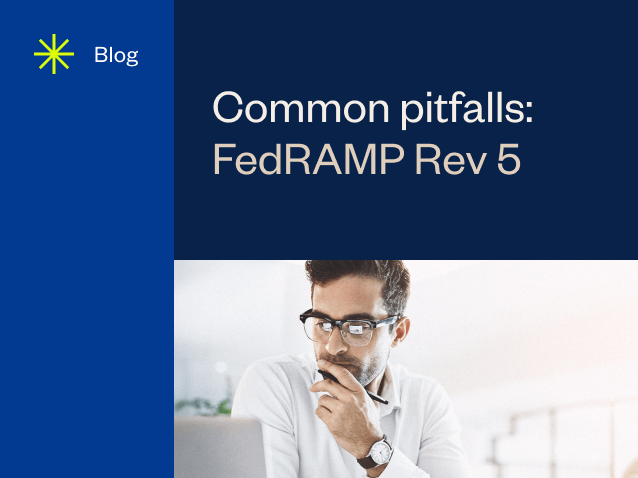Pitfalls to avoid during the FedRAMP Rev 5 transition

In July 2023, FedRAMP released the guidance for Cloud Service Providers (CSP) to transition from NIST 800-53 Revision 4 to Revision 5. The FedRAMP Rev 5 transition ranks as one of the biggest changes for CSPs in FedRAMP compliance and requires significant updates to all FedRAMP related processes, controls, and documentation.
For more information on the differences from Rev 4 to Rev 5 see our blog post Understanding the New FedRAMP Rev 5 Baselines.
As CSPs already on the marketplace are beginning to progress through their 2024 Annual Assessments for the first time since Rev 5 became a requirement, our assessors are seeing general pain points emerge for CSPs first assessment against the Rev 5 standard. Below is a summary of key challenges for cloud service providers (CSPs):
Ambiguity in requirements: Not defining parameters appropriately
Challenge: Revised controls in Rev. 5 introduce new parameters and updated requirements. This includes controls that already existed under Rev. 4 with additional requirements and adjustments in language. Their parameters will have to be updated as well. These controls are easy to overlook when focusing on the entirely new controls that Rev. 5 has introduced.
Solution: CSPs should collaborate closely with their security teams, assessors, and compliance officers. Clear communication and documentation are crucial. Detailed guidance on parameter definitions, use cases, and examples can mitigate this challenge. Begin with existing controls that have updated parameters for Rev. 5, then move onto the entirely new controls introduced in Rev. 5.
Privacy controls gap: Lack of incorporation within the framework
Challenge: While Rev. 5 integrates privacy controls throughout the catalog, CSPs may overlook their inclusion. Privacy is now a central theme, but some providers continue to focus solely on traditional security controls, neglecting privacy-related aspects.
Solution: CSPs must actively map their existing controls to the integrated privacy framework. Training and awareness programs can help bridge the gap. Additionally, leveraging tools and templates provided by NIST and FedRAMP can streamline the process.
Incomplete supply chain risk management implementation
Challenge: The new Supply Chain Risk Management (SR) control family demands robust supply chain risk assessments. CSPs, especially those new to the cloud space, grapple with building comprehensive SR plans. Incomplete implementation can jeopardize the security of the entire ecosystem.
Solution: CSPs should establish checks and balances within their supply chains. Collaborate with vendors, assessors, and third parties to ensure thorough risk assessments. Documentation of processes and transparent communication are essential.
Control objective misalignment: New controls falling short
Challenge: Implementing the new controls doesn’t always align perfectly with their intended objectives. CSPs may struggle to fully meet the control goals due to operational constraints or resource limitations.
Solution: CSPs should conduct thorough gap analyses. Identify areas where control objectives are not fully met and prioritize remediation efforts. Regular assessments and continuous improvement are critical.
Red team exercise: Relying on 3PAO penetration tests
Challenge: Control CA-8(2) introduces a new red team exercise requirement. However, some CSPs mistakenly rely solely on the 3PAO FedRAMP guided penetration testing to fulfill this requirement. However, penetration testing and red teaming are two unique exercises.
Solution: While FedRAMP is still finalizing requirements for red teaming, CSPs must recognize that the organization’s red team exercises are essential. They provide context-specific insights and simulate real-world scenarios. A balanced approach, combining both internal and 3PAO assessments, ensures comprehensive security testing. A-LIGN offers independent red team assessments apart from our FedRAMP services that can help management better assess their security posture and meet the requirements of Rev 5.
In summary, the transition to NIST SP 800-53 Rev. 5 demands careful attention to detail, proactive practices, precise implementation statements, and a robust security approach. By addressing these challenges, CSPs can enhance their security posture and successfully navigate the evolving landscape of information security and privacy.
